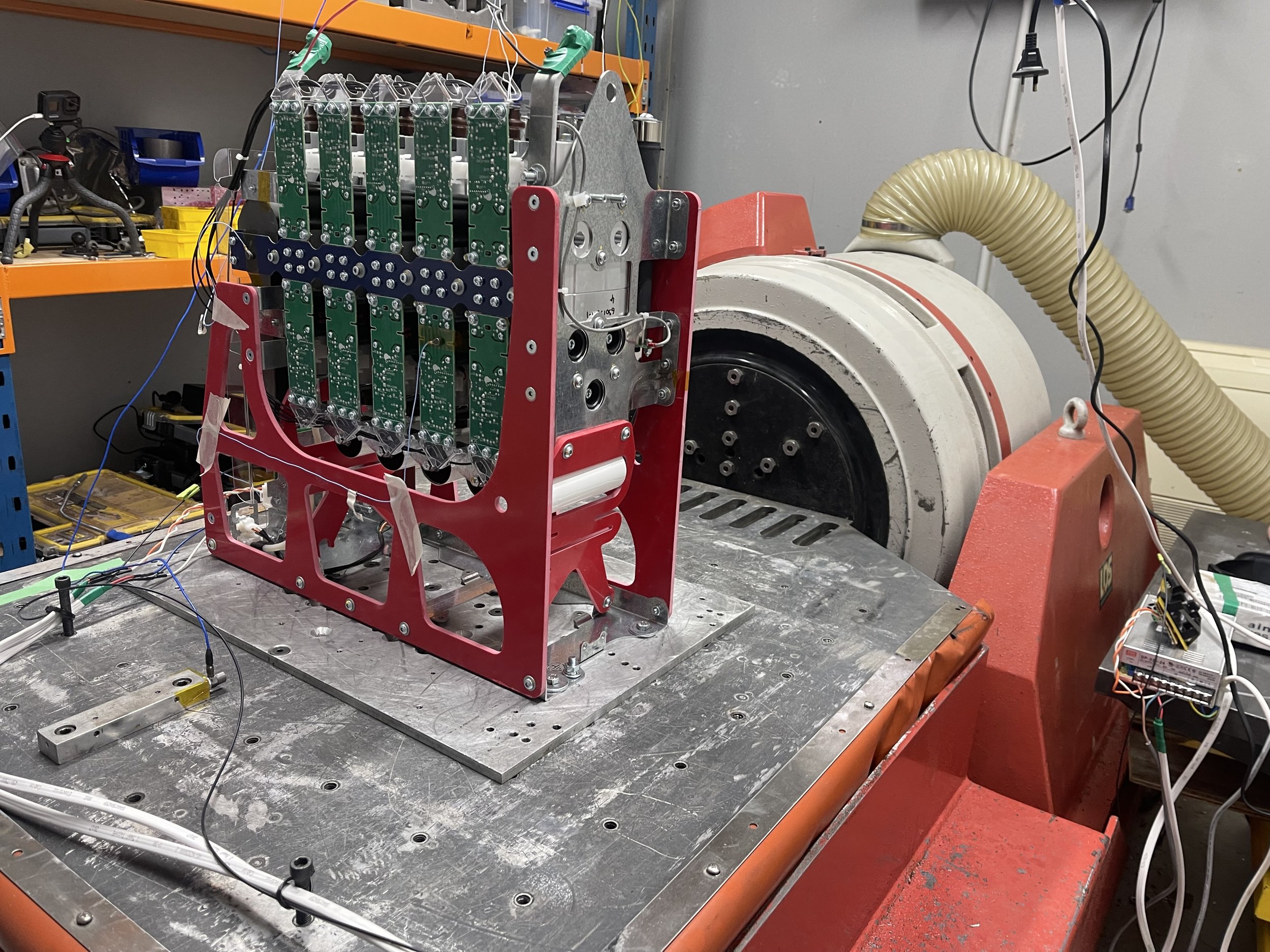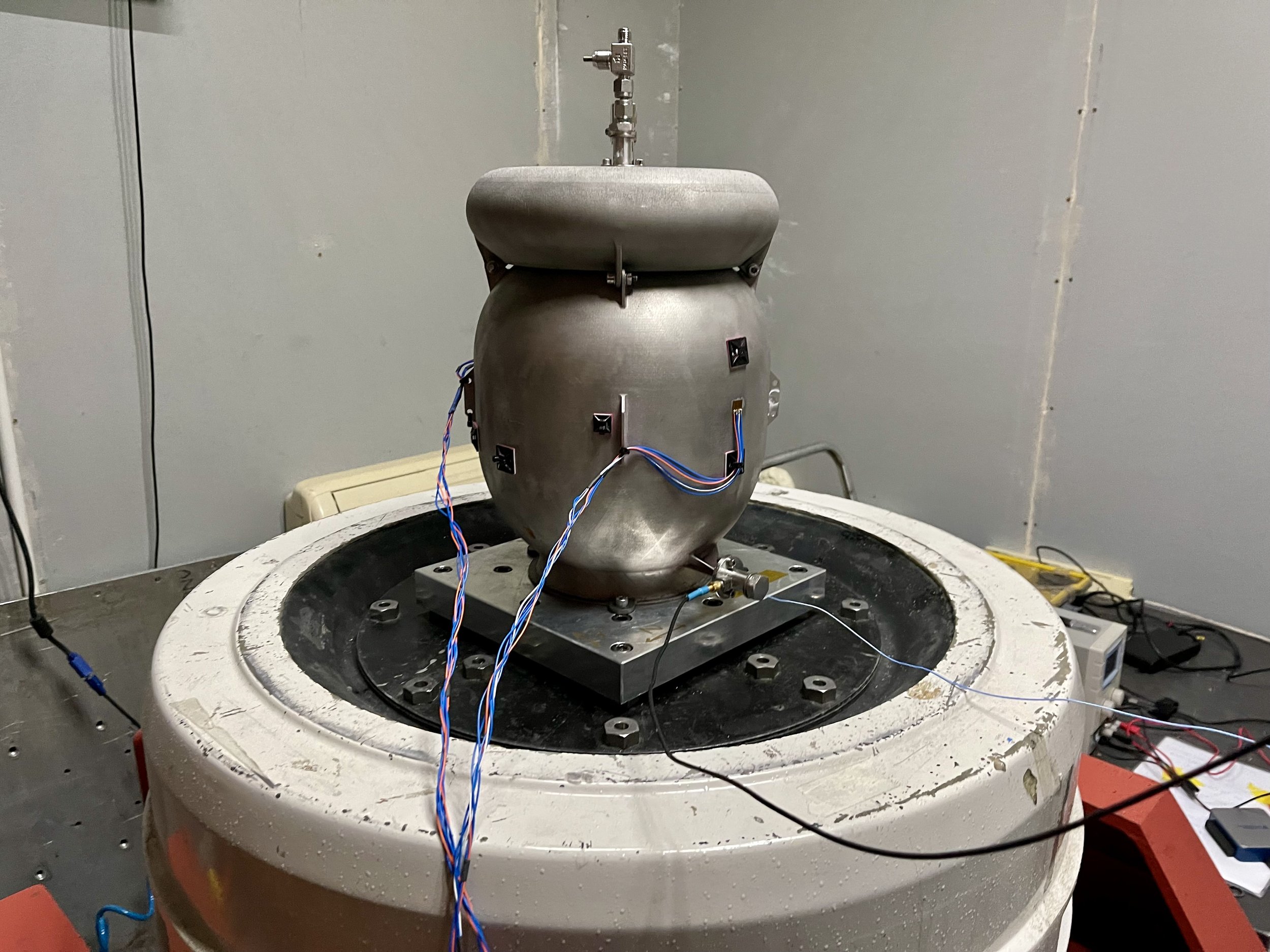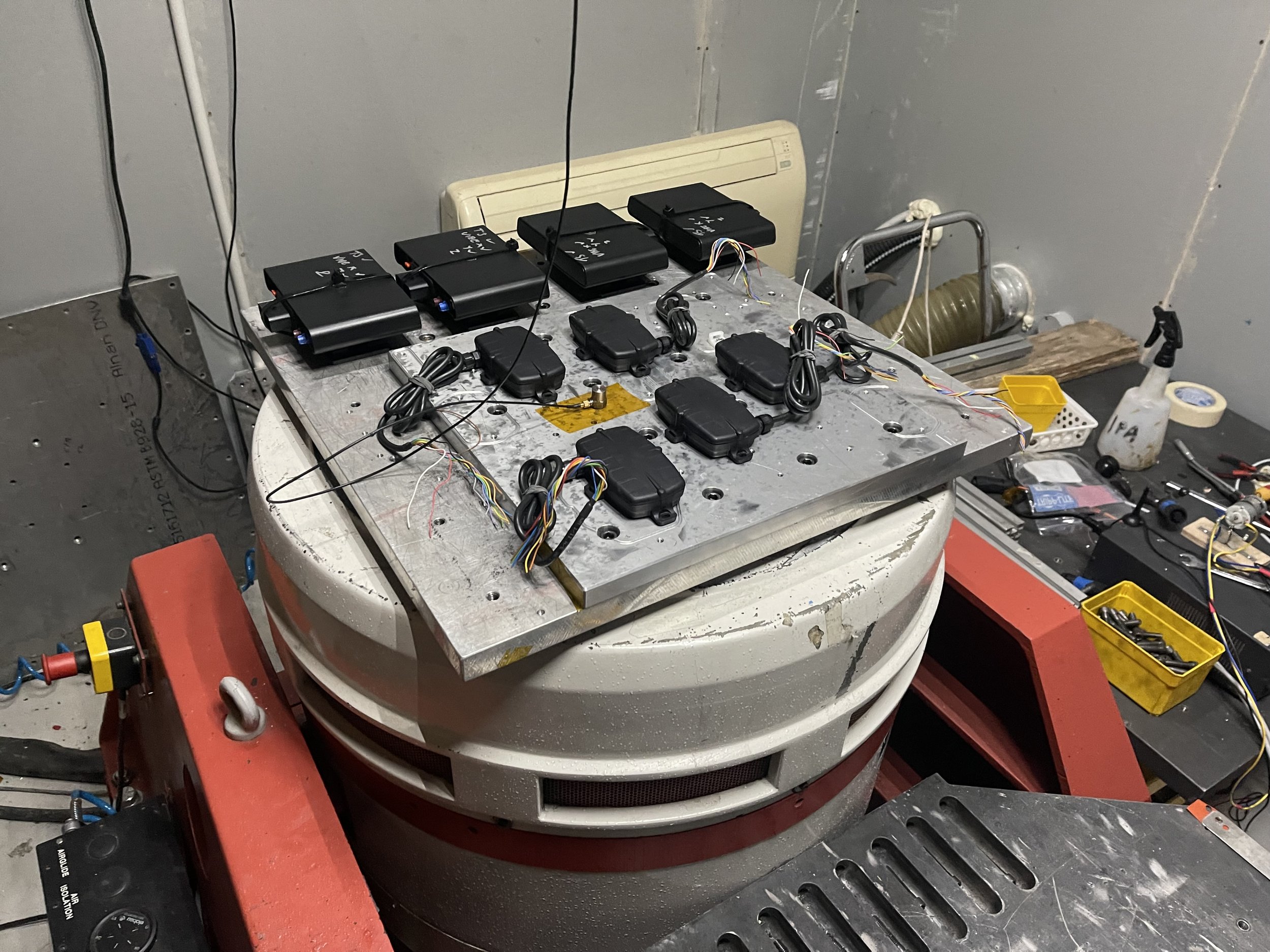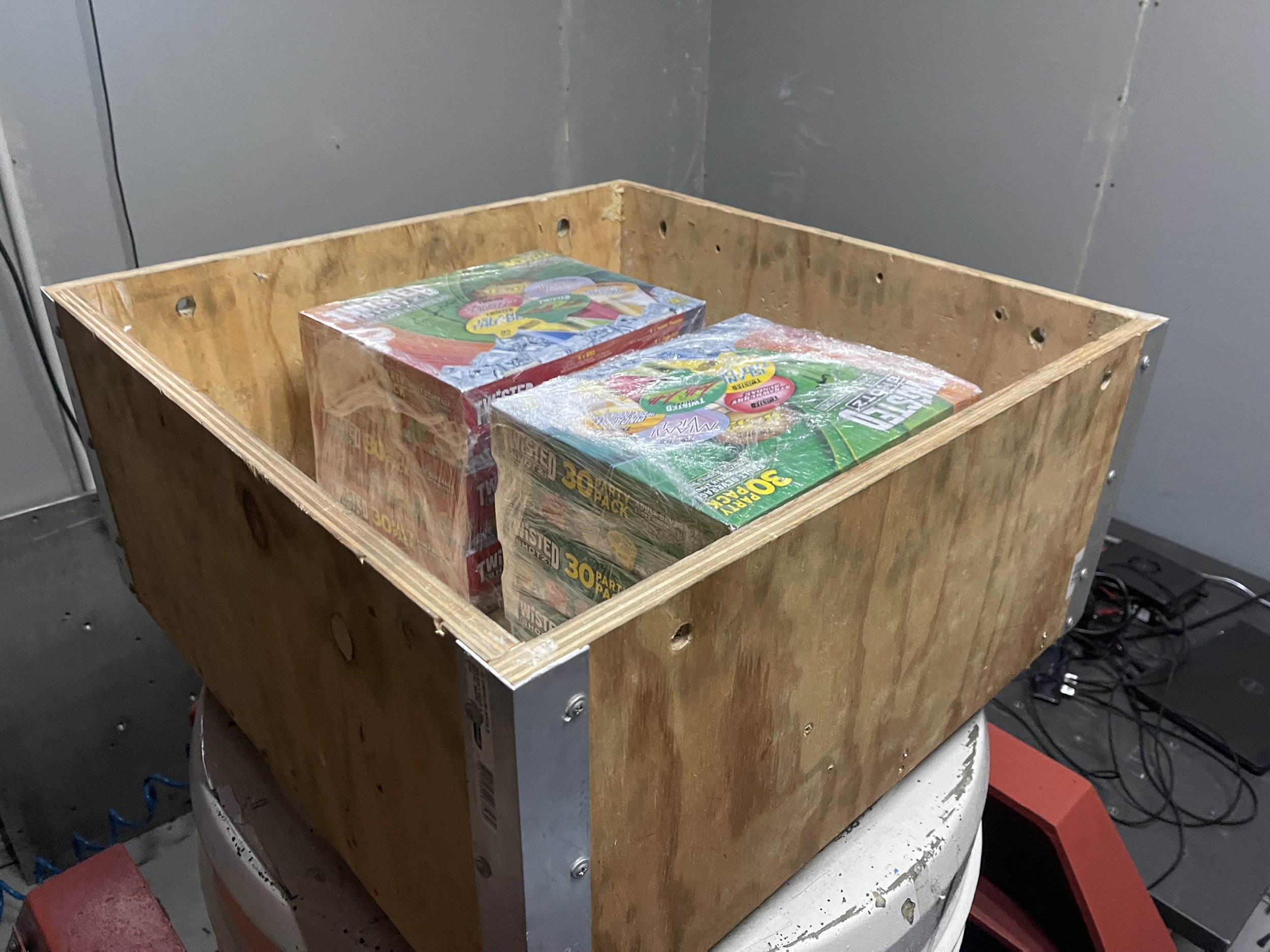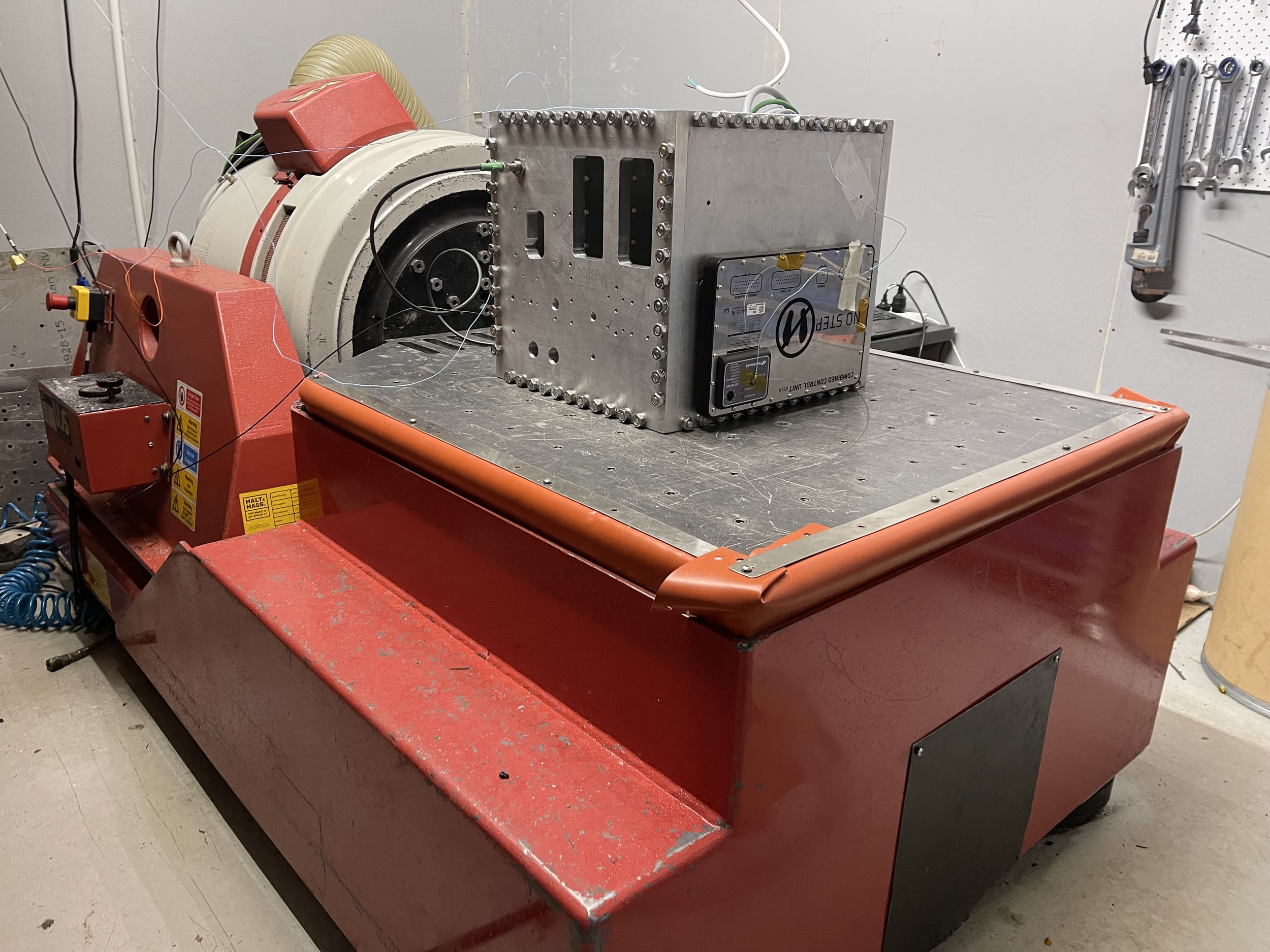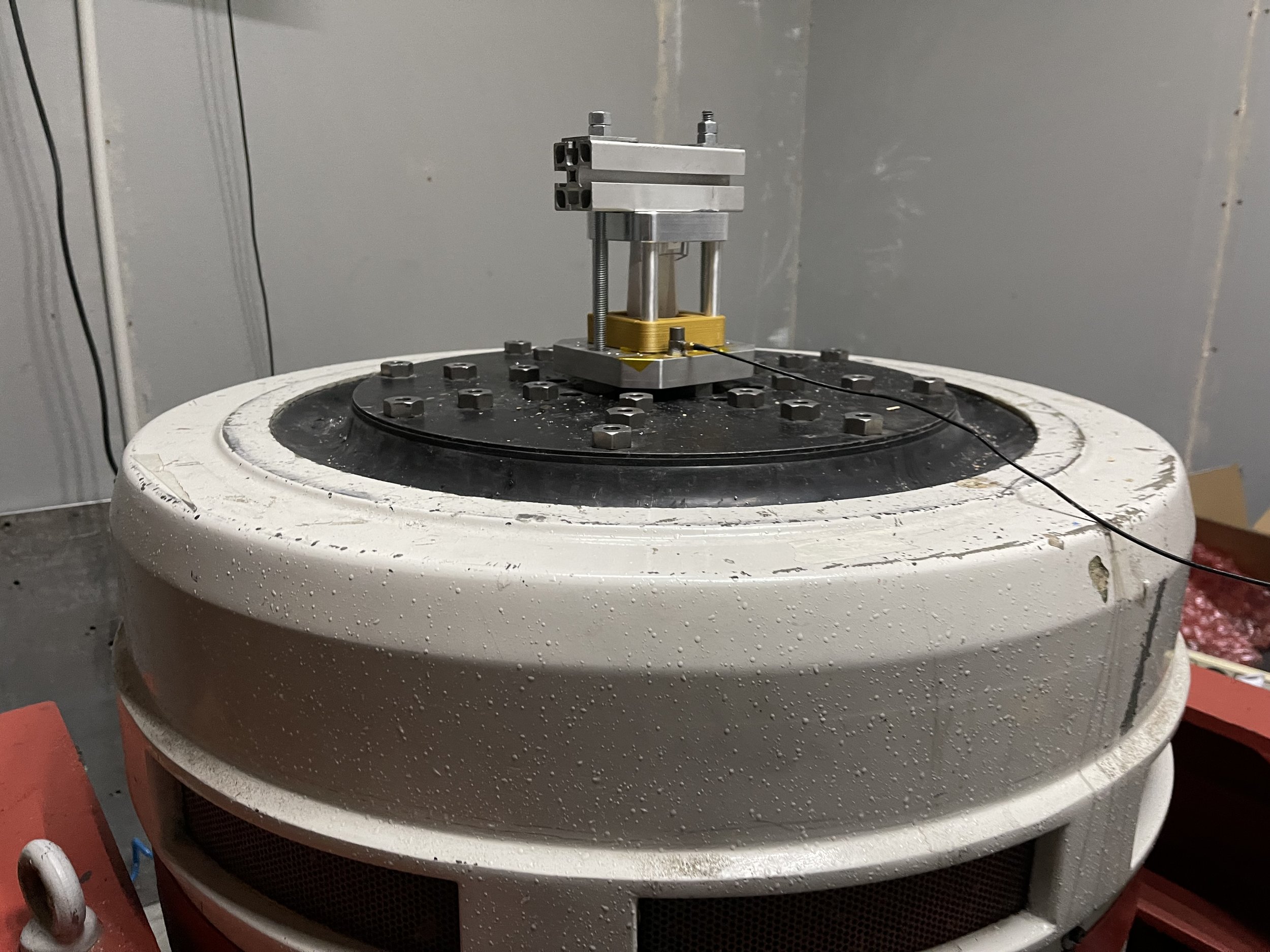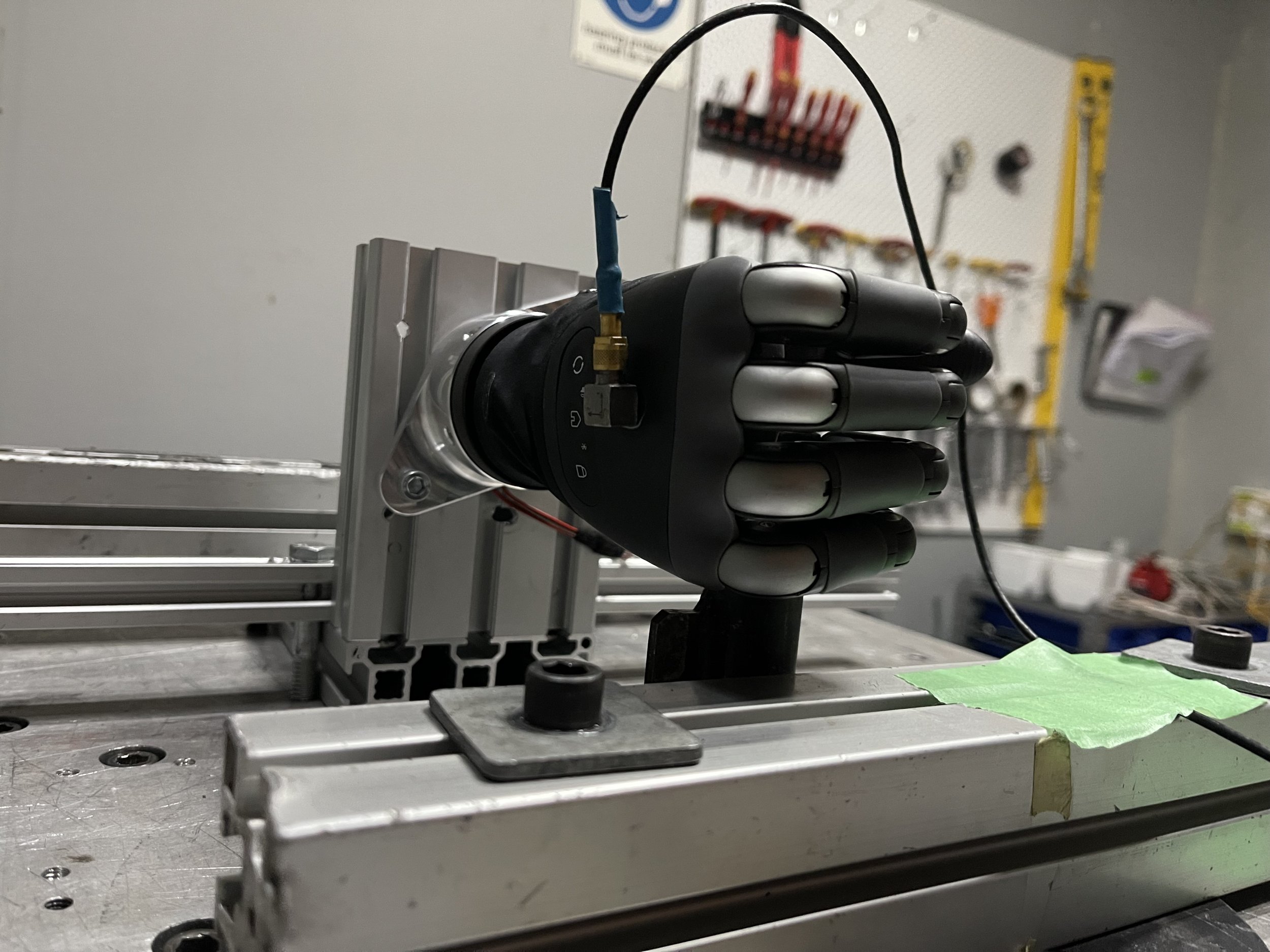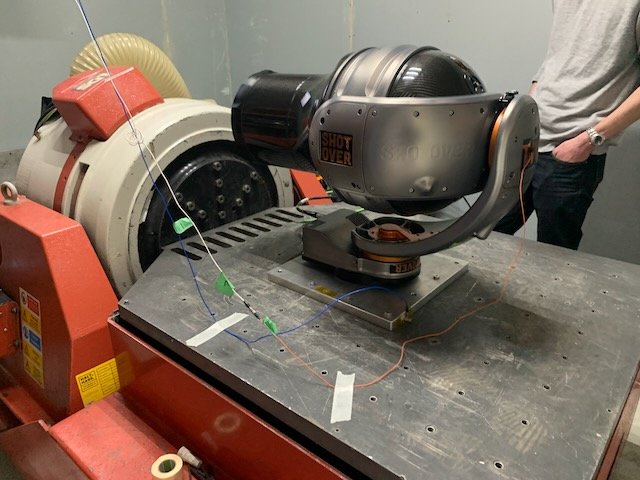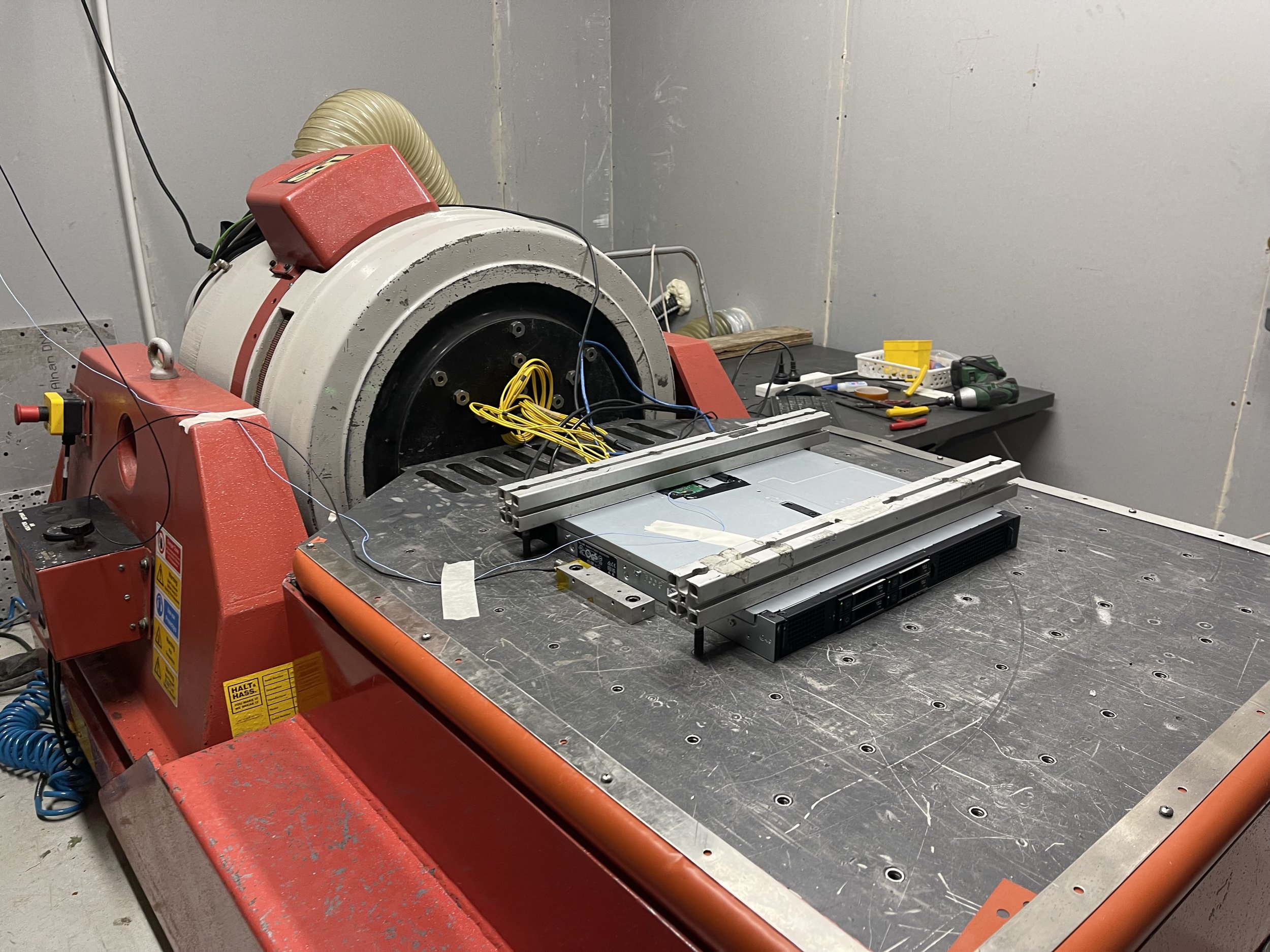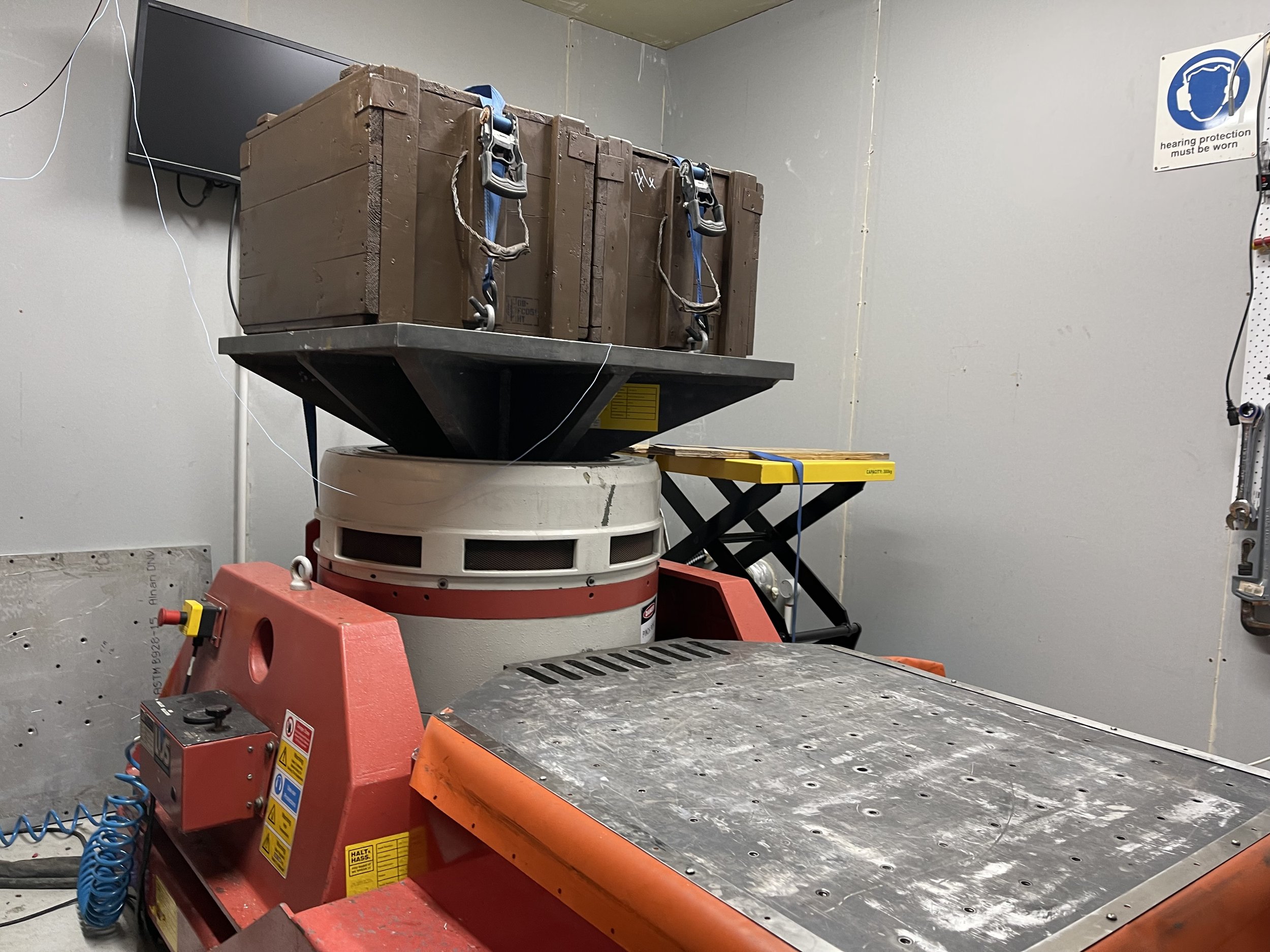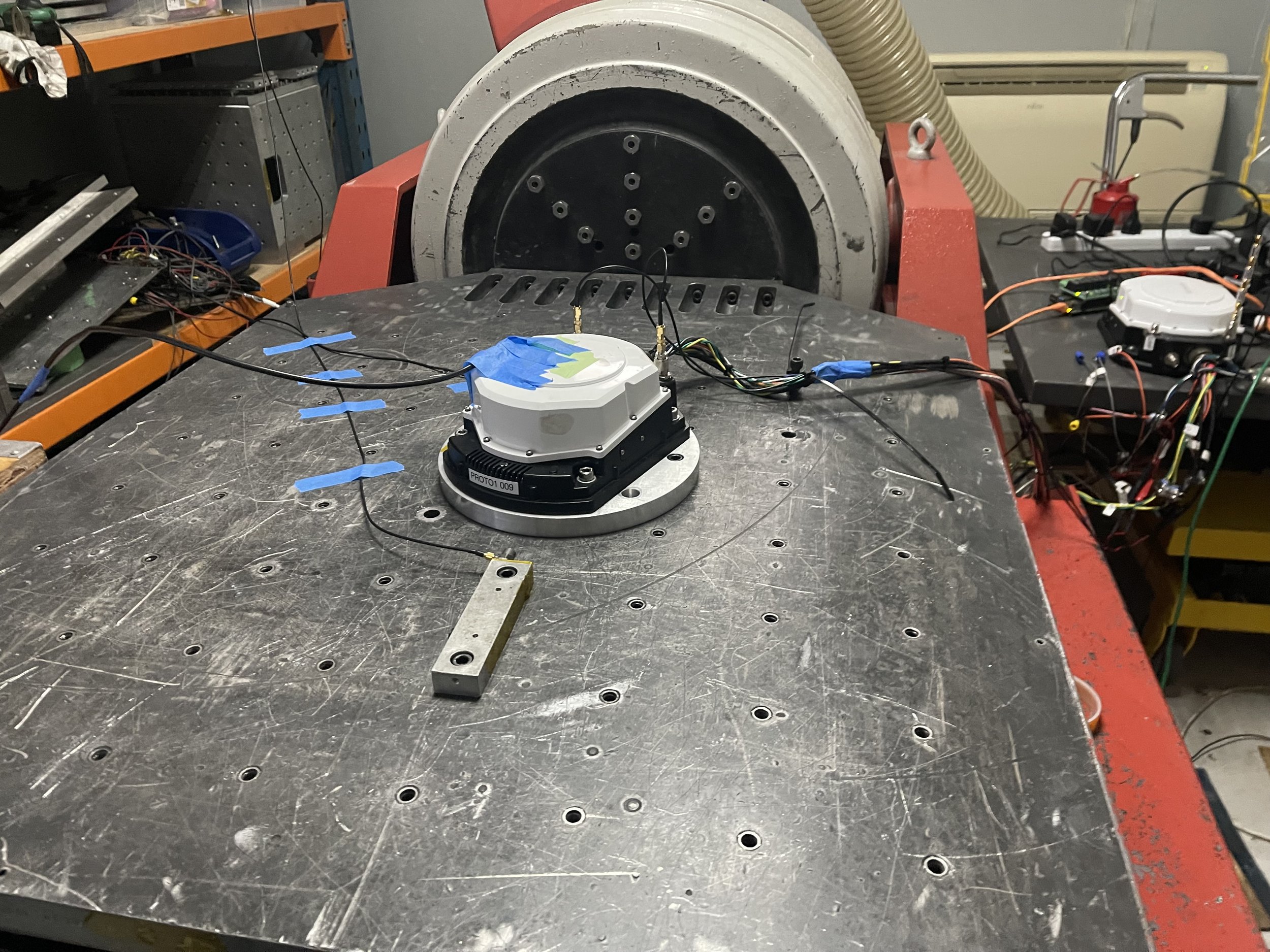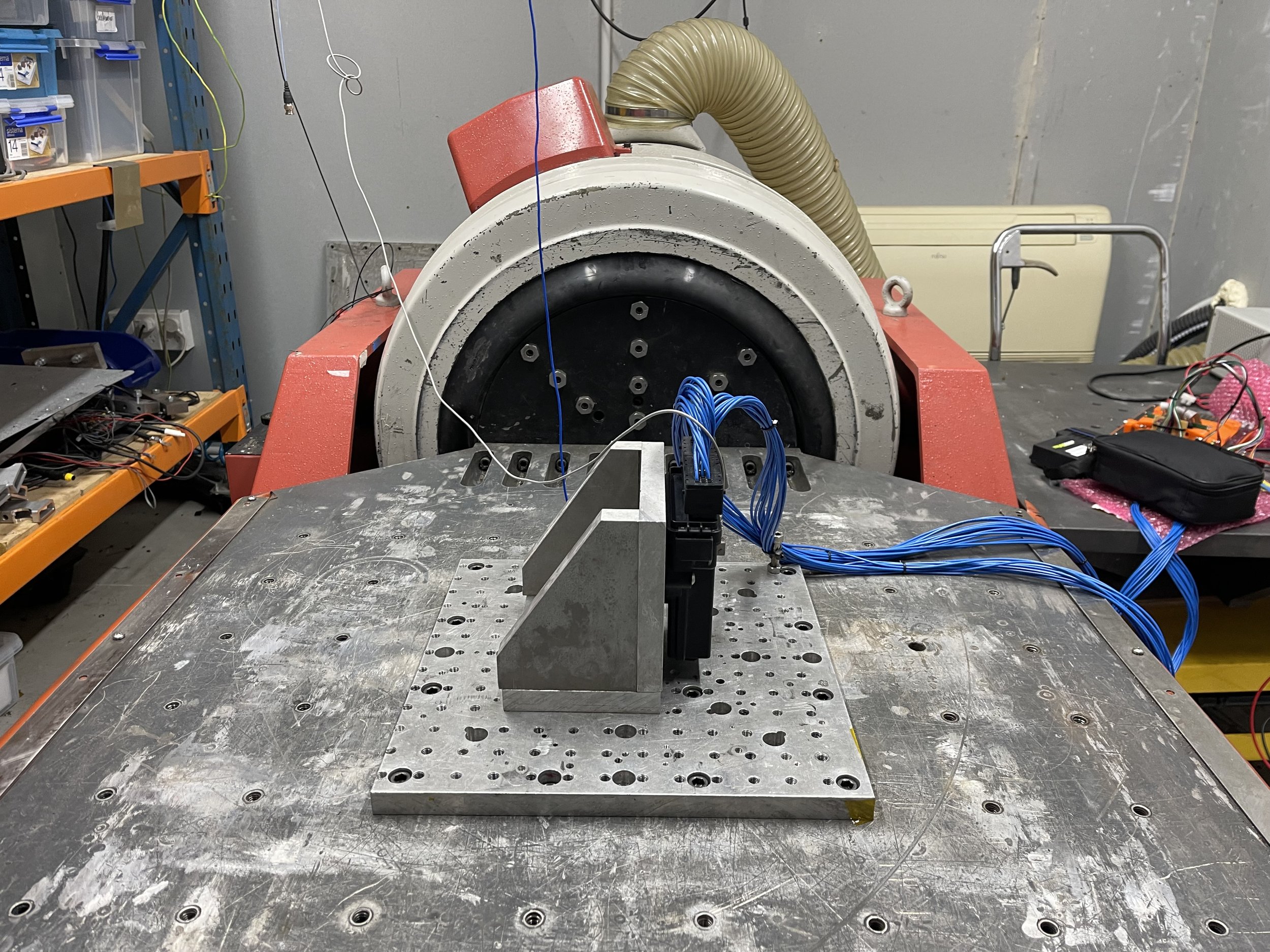Vibration & Shock Testing
We are experts in vibration testing, conducting hundreds of tests each year for a wide variety of industries - catering for automotive, aerospace, consumer electronics, packaging and medical equipment manufacturers. If you’re not sure which vibration testing standard you should use, or want help developing your own internal test standard reach out and we’ll help. We can help with selecting standards, tailoring tests to your needs and with fixture development.
Vibration testing can be conducted to a range of test standards, including but not limited to MIL-STD-810, IEC60068, ISO-16750, LV-124, DEF-STAN-0035, DO-160, Rocket Launch Providers, ISTA-2A, ASTM-D4169, and many more.
Our vibration controller includes support for sine, random, sine-on-random, random-on-random, classical shock, SRS shock, long waveform shock, time replay, multi-spot sine, and non-gaussian (kurtosis) random. We have 4 channels of input monitoring and a range of calibrated measurement accelerometers for resonance search or modal analysis.
Random Vibration Testing
Random vibration is typically conducted on parts that are subjected to wide-band vibration in their end use. Common scenarios include the transport environment, automobile installs, defence and aerospace applications. With random testing the product is exposed to a band of frequencies with breakpoints imposed across this spectrum. Measured in gRMS random no two profiles are alike, you really need to know the breakpoints to compare two different tests. Testing can be performed using Gaussian or Kurtosis control, depending on your needs.
Filtering for random depends on the range of frequencies applied. If you’re testing anything over 500Hz you need to use the maximum clamping force available by ensuring all fasteners are fitted to your vibration interface plate (fixture). We can help with designing and reviewing product fixturing to make sure you get the results you need.
If you’re interested in a particularly weird or wonderful product application and can’t find a suitable standard we can help with in-field vibration measurement to characterise your end-use environment.
We’re also able to conduct both Sine-on-Random and Random-on-Random testing - our controller supports both.
Benefits of random vibration testing include:
Exciting all resonance at once
Covering a wide range of installation locations
Ability to tune the profile to suit your end-use
Random Vibration Test Standards
IEC 60068-2-64 :: Environmental testing – Part 2: Test methods – Test Fh: Vibration, broad-band random (digital control) and guidance
IEC 60068-2-80 :: Environmental testing – Part 2-80: Tests – Test Fi: Vibration – Mixed mode
ISTA 2 Series: 2A, 2B, 2C, 2D, 2E, 2F :: Partial Simulation Performance Tests
MIL-STD-810H :: Environmental Engineering Considerations and Laboratory Tests – Revision H
DO-160G :: Environmental Conditions and Test Procedures for Airborne Equipment
DEF-STAN-0035 :: Environmental Handbook for Defence Materiel - Environmental Test Methods
DNV-CG-0339 :: Environmental test specification for electrical, electronic and programmable equipment and systems
Lloyds :: Register Type Approval System - Test Specification 1
ISO16750-3 :: Road vehicles - Environmental conditions and testing for electrical and electronic equipment - Part 3: Mechanical loads
LV-124 M-04 Vibration Test
Sinusoidal Vibration Testing
Sine vibration testing subjects the sample to a singular frequency in either a swept or stepped manner. Sine sweeps are often conducted to assess the modal response of the product under test - typically referred to as a resonance search. Accelerometers are attached to the sample which provides a measure of the resonant frequencies present. The amplitude of these resonances is typically used to assess how damaging the may be in the end-use environment. A typical test might be something like 20-2000Hz at 1 Octave per Minute sweep rate, with an amplitude of 0.5g-pk. Roadside cabinets, aerospace application and power generation are some examples where this test is often applied.
When testing large samples lower frequencies are applied, generally in the 1-150Hz range. At frequencies below 10hz amplitude is generally expressed in mm (pk-pk or single amplitude) displacement, whilst higher it is expressed in g-pk. In a nominal sine sweep there is often a “cross-over” frequency where the controller will switch from displacement to amplitude control. These cross-overs exist because lower frequencies with higher g-levels are disproportionally damaging due to the larger throw and faster cycling.
Sinusoidal vibration is particularly good for assessing samples before conducting further endurance style random tests, and is used to assess whether the endurance test may have caused structural damage to the product.
Our controller includes resonance and amplitude dwell, and multi-sweep sine.
Benefits of sine vibration testing:
Accurate feedback of product response to design modelling (FEM)
Able to assess amplification factor of each resonance and target mitigations to suit each one
Provides a benchmark for product improvements or changes after random testing
Can be extremely quick to damage heavier samples
Bump Test
Another form of sine testing is referred to as “bump”, in this test the samples are free to move around the vibration table and the frequency is swept until they begin to bounce. At this point a sine dwell is conducted, either time-bound or vibration-cycle bound to assess resilience. We call it the “back of the ute” test, and it can be especially good when combined with dust particles for testing the resilience of connectors to foreign particle intrusion, and abrasion.
Sinusoidal Vibration Test Standards
IEC 60068-2-6 :: Environmental testing – Part 2: Tests – Test Fc: Vibration (sinusoidal)
ISO 8318 :: Packaging — Complete, filled transport packages and unit loads — Sinusoidal vibration tests using a variable frequency
ISTA 2 Series: 2A, 2B, 2C, 2D, 2E, 2F :: Partial Simulation Performance Tests
MIL-STD-810H :: Environmental Engineering Considerations and Laboratory Tests – Revision H
DO-160G :: Environmental Conditions and Test Procedures for Airborne Equipment
DEF-STAN-0035 :: Environmental Handbook for Defence Materiel - Environmental Test Methods
DNV-CG-0339 :: Environmental test specification for electrical, electronic and programmable equipment and systems
Lloyds :: Register Type Approval System - Test Specification 1
AS 7240.2 §16.7 and §16.11 for CIE.
Mechanical Shock Testing
We conduct mechanical shock testing using our Electrodynamic Shakers and support both time-based and Shock Response Spectrum (SRS) pulses. Time-based pulses can be selected from half-sine, haversine, trapezoidal, sawtooth, and terminal peak. SRS allows full control up to 2500Hz, the shaker maximum rating.
Additionally our vibration controller supports sine-beat and sine-burst shock events which are commonly required in the aerospace industry and for various rocket launch providers. Our vibration controller supports Long-waveform capture for up to 6.5 minutes of shock data at 512Hz, and mega point for 5000K datapoints, about 163 minutes at 512Hz sampling rate.
Shock events occur in a variety of end-use applications, but one of the more recognisable is hitting potholes in vehicles - which leads to a short sharp impulse. The duration of the pulse is governed by the sprung weight of the vehicle, the composition of the tyres and the structures preceding your mounting point. Shock amplifies when resonances stack, so depending on the stack-up from road input to your product a 10g input may well reach 80-100g.
Damage from shock is also weight related, for example if you drop an electronic component on the floor it will experience a shock event of 1000’s of g, but the duration will be extremely short (<1ms). A plane however when landing may experience a 5g shock with a duration of 100ms, which can be catastrophic to ceramic bearings. The small device “rides over” the long pulses, much like the plane wouldn’t react to a <1ms pulse, it’d be flick flicking it with your finger.
Benefits of mechanical shock testing:
Can accurately replicate stresses encountered in the field
Can produce repeatable results, more so generally than drop tests
Able to be used in a “step stressing” manner, you can run 10 shocks in each direction, then increase the pulse and go till failure.
Can quickly simulate a life-time of shock events very quickly.
Mechanical Shock Test Standards
IEC 60068-2-27 :: Environmental testing. Part 2: Tests. Test Ea and guidance: Shock
IEC 60068-2-81 :: Environmental testing – Part 2-81: Tests – Test Ei: Shock – Shock response spectrum synthesis
MIL-STD-810H :: Environmental Engineering Considerations and Laboratory Tests – Revision H
DO-160G :: Environmental Conditions and Test Procedures for Airborne Equipment
DEF-STAN-0035 :: Environmental Handbook for Defence Materiel - Environmental Test Methods
LV-124 :: M-05 Mechanical Shock

